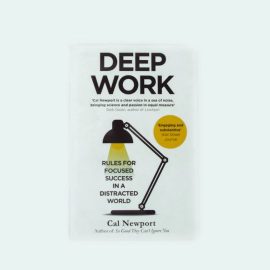

This article is an excerpt from the Shortform book guide to "Invisible Women" by Caroline Criado Perez. Shortform has the world's best summaries and analyses of books you should be reading.
Like this article? Sign up for a free trial here .
What are the effects of gender inequality in the workplace? What causes gender inequality in the workplace?
In Invisible Women, Caroline Criado Perez explains that gender inequality at work is caused by the gender data gap. One effect of this inequality includes disadvantaged hours that work for men, but not women.
Read about the other effects of gender inequality below.
How the Gender Data Gap Affects Women in the Workplace
Perez explains that most business leaders are men who operate on a male-as-default mindset: They assume that if something works for them, it must also work for women. This mindset stems from the reality that these men don’t have the life experience of women. That gap in experience is a form of a gender data gap. Because they’re not women, they don’t have the data regarding what women might need. As a result, these men create workplace cultures that don’t take women’s needs into account simply because women’s needs don’t occur to them. This creates harmful effects of gender inequality in the workplace.
To illustrate, Perez points to the standard modern workplace culture, which she argues is designed for unencumbered workers—people who can focus solely on work because they’re not responsible for domestic work or care. As she points out, the standard modern worker has fixed hours (9 a.m. to 5 p.m.). The longer you stay, the more productive you’re considered, and sudden shifts to your schedule are frowned upon. Perez asserts that as a result, standard modern workplaces disproportionately disadvantage women.
Since most of the world’s unpaid care is done by women, women are more likely to be encumbered—and thus can’t succeed as well as men in a culture designed for the unencumbered. If a child gets sick, his mother might need to suddenly shift her work schedule—but this damages her standing at work. And if a company’s policy is to distribute raises based on how much overtime someone works, this policy disadvantages women—who are more likely to need to go home at exactly 5 p.m. to cook dinner for their families.
As Perez points out, several companies do try to consider women’s unpaid care responsibilities—like IBM, which offers on-site childcare. But these companies are the exceptions, not the rule—and modern workplaces regularly make decisions that don’t take women’s needs into account. For example, in 2017, Apple announced plans to create the “best office in the world.” These plans included several fantastic amenities like a dentist—but not a daycare center, which Perez feels would likely be more appreciated by many women.
How Companies Can Make Workplaces Better for Women
As a result of the Covid-19 pandemic, many offices moved away from the standard workplace culture Perez describes and began offering fully or partially remote roles. However, there is still gender inequality in these workplaces. This is partly because, even if both parents are working remotely, the woman still likely takes on more childcare. One study found that during the Covid-19 pandemic, both men and women spent more time on unpaid childcare than they did before—but women took on three times as much as men did.
Additionally, experts warn that in hybrid environments, remote workers are less likely to be promoted than in-person workers—and this disadvantages women, who are more likely to take on remote work because it allows them more flexibility to cover their unpaid care responsibilities.
So what can companies do to meet the needs of their female employees? If they have an in-person office but can’t provide on-site childcare, experts recommend partnering with nearby childcare facilities. However, this isn’t always a popular decision: Many Nike employees were upset when the company switched from on-site childcare to partnering with a nearby facility, partly because having their children so close was especially useful to some parents—like nursing mothers. That said, if companies want to discourage a work-life balance, not providing childcare may be better: Apple’s lack of a daycare center was arguably a deliberate message to their employees to prioritize their work over everything else.

———End of Preview———
Like what you just read? Read the rest of the world's best book summary and analysis of Caroline Criado Perez's "Invisible Women" at Shortform .
Here's what you'll find in our full Invisible Women summary :
- How society's male-as-default mindset leads to a gender data gap
- Why cars don't properly protect women during accidents
- Why we don’t know how most medicines affect women






